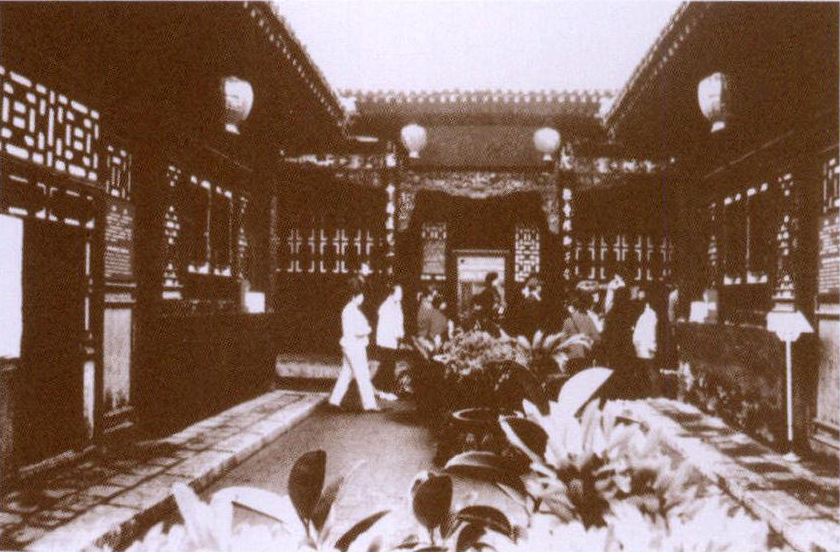历史百科 票号在天津发端
Posted 颜料
篇首语:我走在逃离命运的路上,却与命运不期而遇。本文由小常识网(cha138.com)小编为大家整理,主要介绍了历史百科 票号在天津发端相关的知识,希望对你有一定的参考价值。
历史百科 票号在天津发端
天津的金融业历史悠久,明末清初,已是萌芽状态,出现了钱局、钱铺、炉房和典当。
清代,天津通用的货币主要是银两和铜钱。随着商业的发展,贸易往来增多,不同地区之间出现了频繁的相互拨款。一些路途遥远,大批量的交易活动,在货币交付中,使用的银两、铜钱极其沉重,不仅无法自行携带,而且路上也很不安全,只好委托 “镖局”护送,既花费很大,又不能保证交款时间,并且有相当大的风险。
乾隆、嘉庆年间,山西省平遥县西达蒲村李家为股东,开设了西裕成颜料庄,总号设在平遥城内西大街,资力雄厚,在天津、京师、汉口、成都等城市开设了分号,天津的分号设在针市街。
先后在汉口、京师、天津任过颜料分号经理的雷履泰,在天津分号任经理时,看到颜料庄每年去四川采购一种叫 “铜绿”的颜料,大批银两需要委托 “镖局”运往四川,深觉这对颜料庄来说,是一种困扰。雷履泰便琢磨如何采用一种新的便捷办法,他借鉴古代飞钱、便钱(或便换)的经验,总结出一套较为完整的汇兑经营模式,用以解决两地拨付货款的问题。
雷履泰先与四川地方官府商妥,由西裕成颜料庄代替四川地方官府向朝廷交纳应该解往京城的地赋税银,换取收据; 然后带着收据去四川采购颜料时,用以兑换现银; 在当地拿到现银后,再去购货。这样就大为方便了,地方官府也免去解运税银之劳,从而两得其便。
后来,四川商人到天津、北京购货,也将现银交给颜料庄在四川的分庄换取汇票,到天津后凭借汇票兑换现银使用。颜料庄的这种汇兑业务逐渐发展起来,虽然从中收取一定的 “汇水” (即汇费),但是比委托 “镖局”押送现银的花费要节省很多,而且安全、方便。通过这种银钱汇兑,不仅使颜料庄在几年内盈余数十万两银子,并且在中国首创了汇兑业务。
雷履泰被调回平遥总号任经理后,建议东家将颜料庄改为专营银两汇兑和存放款业务的票号,经东家李大全同意,投资30万两纹银,于清道光三年(1823年),另一说是道光二年(1822年),正式成立了日升昌票号。所谓“日升昌” ,意在如日东升,生意昌盛。雷履泰出任总经理(大掌柜)。日升昌是中国第一家票号,应该说,天津是中国票号的发祥地。
票号的经营是以汇兑为主,所以采取分支连锁制度,除在财东所在地设总号外,多在外地设立分号、联号及一些代理店。日升昌票号成立后,很快在全国40余个大中城市设立了分号,票号业务搞得红红火火。

·山西平遥日升昌票号总号后院
天津开埠以后,钱业发展,各钱铺多吸揽票号存款,以扩充业务;埠际贸易也有赖票号为之调节,所以票号业务发展很快。光绪二十六年(1900)庚子事变前,天津的票号发展到鼎盛时期。光绪三十一年(1905)、三十二年(1906),天津有票号25家。日升昌,地址在针市街,东家是李五典、李五玉、李五庸、李五峰,这是日升昌票号的第三代财东。经理是乔仰侨。
票号发展的鼎盛时期,也隐伏着危机的到来。1921年票号结束了在天津的历史。
The history of finance in Tianjin can be traced backto the end of Ming Dynasty or the beginning of QingDynasty when there appeared cash bureaus,cash shopsand pawnshops.
In Qing Dynasty,currencies in Tianjin were mainlytaels and copper cash. With the development of businessand trade,there needed more frequent money transfer;but the traditional taels and copper cash were too heavyto carry in doing business.
During the reigns of Emperor Qianlong and EmperorJiaqing,a person whose family name is Li launched apigment shop "Xiyucheng" in the county seat of Pingyaoin Shanxi Province. Later,several branches of the shopwere opened in Tianjin,Beijing,Hankou and Chengdu. TheTianjin branch was located in the Zhenshi Street.
When Lei Lutai was the manager of the Tianjinbranch,he sent people to Sichuan Province to buya kind of pigment called "Copper Green" (patima)every year. He was disturbed by the inconvenienceof fetching large amount of money into Sichuan. Leiracked his brains and got a new method of moneytransfer by studying the past experiences.
Firstly,he reached consensus with the SichuanGovernment that Xiyucheng paid silver of taxation inadvance and got the warrant,which could be changed intotaels when he went to Sichuan for pigment purchase. Itturned out to be a win-win model for both sides.
Later,when Sichuan businessmen went to Tianjinand Beijing to buy goods,they gave taels to Xiyucheng\'sSichuan Branch to exchange taels,through which theycould got money in Tianjin. The exchange business grewquickly with drawing some remittance fee,which wasmuch cheaper than the money paid for armed escorts andmuch safer and more convenient. By doing exchangebusiness,Xiyucheng accumulated hundreds of thousandsof taels of silver. This was the beginning of exchangebusiness in China.
When Lei Lutai was moved to Pingyao headquarter asthe manager,he suggested to his boss Li Daquan to changeXiyucheng from a pigment company into an exchangeshop,majoring in taels exchange and loan. Li agreed andinvested 300,000 taels to set up the Rishengchang in 1822(or 1823). Rishengchang means the rising sun,indicatinga prosperious business as a rising sun. Li served as thegeneral manager of the shop,which is regarded as the firstexchange shop in China. To some degree,Tianjin was thebirth place of exchange shops in China.
Money exchange was Rishengchang\'s main business,which went smoothly. Besides of the headquarter,it alsoopened dozens of chain shops,joint shops or agencies.Within a short period,there were 40 branches of the shoparound the country.
After Tianjin was opened up as a treaty port,itsfinance business grew fast. Exchange shops competedeach other to get deposits for loaning. In 1900,before theoutbreak of the Gengzi Event,exchange shops\' business inTianjin reached its peak. There were 25 exchange shops inTianjin. The Rishengchang was located at Zhenshi Street.Its third generation of shareholders were Li Wudian,LiWuyu,Li Wuyong and Li Wufeng. The general managerwas Qiao Yangqiao.
The prosperity of exchange shops also generated risks.In 1921,the development of exchange shops in Tianjincame to an end.
相关参考
天津的金融业历史源远流长,清光绪年间是天津票号和银号的鼎盛时期,也是银行业、保险业兴起阶段。自咸丰十年(1860)天津开埠至光绪二十六年(1900)庚子事变,外商纷纷在津开办保险公司;英国、德国、美国
山西的票号票号又称“票庄”、“汇票庄”、“汇兑庄”。它是中国封建社会后期以经营汇兑业务为主的一种金融信用机构。票号是适应商品贸易的发展和货币流通的扩大的产物。明清时期,地区间的商业清算多依赖“镖局”运
1.山西票号的历史资料山西票号,又称汇兑庄或票庄,是一种金融信用机构。开始主要承揽汇兑业务,后来也进行存放款等业务。山西票号的产生有着深刻的社会背景和历史条件,具体来说主要是:社会商品经济的发展对货币
票号是清代出现的一种金融机构,而开办最早的票号是“日升昌”票号,其财东是山西平遥县达蒲村李李箴视。清代中叶,由于物品流通和货币周转的需要,产生了一种专营钱钞汇兑业务的机构,称为“票号”,也称“票庄”,
·孙发端孙发端,公路选线专家。毕生致力于公路选线工作和长期领导我国西北、西南地区的公路布线工作,西安至汉中公路翻越秦岭的盘山公路是其代表作。对西北地区的公路建设和全国公路的勘察设计工作深有研究并做出了
晋商(山西商人)代表人物:王现、平遥日升昌票号财东李箴视;平遥蔚字号首任经理毛鸿翙;大德通、大德恒票号祁县乔家的乔景僖、乔景侃、乔景信;明代蒲州大商张四教等等。晋商首创了中国历史上票号。“票号”是当时
1975年越南难民问题发端由于越南经济恶化,严重缺粮和人民惧怕征兵,自1975年以来,数十万越南人冒险从陆地或海上逃离家园,沦为国际难民。越南当局从中央到地方各省都设立了专门负责管理越难民出口的机构,
1979年12月阿富汗难民问题发端1979年12月27日,苏联军队大举入侵阿富汗后,有500多万阿富汗难民(约占全国人口1/3)流出境外。伊朗收容了150多万阿富汗难民。本着伊斯兰的平等博爱精神,巴基
文/张久卿作为一种具有法律意义的身份证件——公民身份证,现在和我们的生活已经息息相关,密不可分。关于中国居民身份证制度,一般认为是20世纪80年代创建的。查阅有关史料,得知中国的身份证制度可以上溯到2
中国古代有名的钱庄都有哪些1、协同庆钱庄协同庆票号在咸丰六年(1856)创立于平遥南大街。票号旧址于2000年10月全面复修整理,现已开辟为“协同庆钱庄博物馆”内设30个展室,依托大量史料,运用光、电